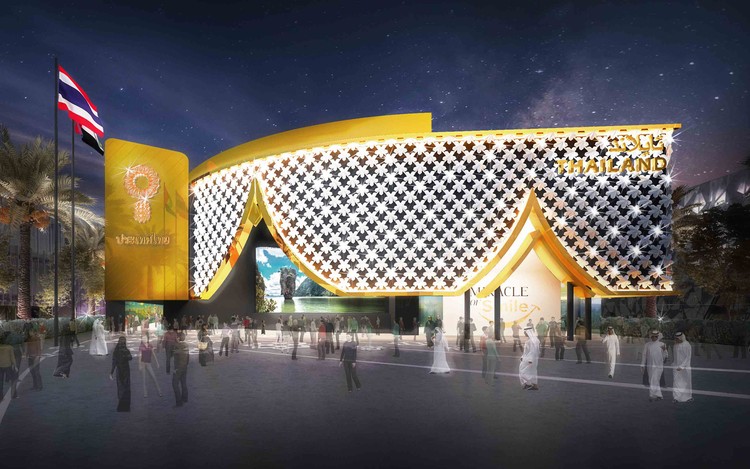
The Kingdom of Thailand has broken ground for its pavilion at Expo 2020 Dubai, becoming the first South East Asian country to begin the construction of its pavilion. The Thailand Pavilion will represent the country through its ‘Mobility for the Future’ theme to showcase transportation, logistics, digital connectivity and personal mobility. To help reduce the heat transmitting to the building, the pavilion will be draped in a curtain made from more than 500 artificial blossoms. Inspired by traditional floral garlands used to welcome guests, the design symbolizes hospitality, luck and respect.

The ground-breaking ceremony took place in the presence of Ms. Ajarin Pattanapanchai, Permanent Secretary of the Ministry of Digital Economy and Society (MDES) and the Commissioner General of Section for Thailand Pavilion; Dr.Tarek Oliveira Shayya Board Director and Chief International Participants Office from the Expo 2020 Dubai ; Dr. Nuttapon Nimmanphatcharin, President and CEO of the Digital Economy Promotion Agency (depa) ; and Mr. Waravuth Pouapinya, Ambassador of the Royal Thai Embassy in Abu Dhabi, UAE .

Commissioner General of Section for Thailand Pavilion Ms. Ajarin Pattanapanchai, said: “We are proud to participate in the first mega-event to be held in the Middle East, with the theme “Connecting Minds, Creating the Future”. Thailand welcomes all participants and visitors of Expo 2020 with great warmth and goodwill to achieve global goals. Construction of the Thailand Pavilion will be divided into three phases including shell and core building, interior works and external works. Construction of the pavilion will include an approximate 250,000 man-hours of work, with the pavilion expected to be completed and operational-ready by September 2020.”
The pavilion will be located in Expo 2020’s Mobility District, with a large plot size of 3,606 square meters. To align with the sustainable focus of Expo 2020 and to reduce its environmental impact, the construction and design of the pavilion has been carefully planned to use a minimal amount of power and energy. In addition, all materials will be locally sourced to help reduce the pavilion’s carbon footprint, with recycled concrete, steel and aluminium used for the structural works.












